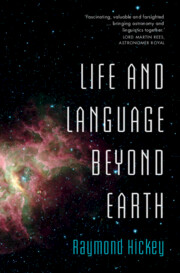Book contents
- Life and Language Beyond Earth
- Reviews
- Life and Language Beyond Earth
- Copyright page
- Contents
- Tables and Figures
- Preface
- How to Use This Book
- Part I Introduction
- Part II The Universe We Live In
- 4 Trying to Grasp Size
- 5 Star Formation and Planets
- 6 The Likelihood of Life
- 7 Possible Conditions on an Exoplanet
- 8 How and Where to Look for Exolife
- 9 The Limits of Exploration
- 10 Assessing Probabilities
- Part III Our Story on Earth
- Part IV The Runaway Brain
- Part V Language, Our Greatest Gift
- Part VI Life and Language, Here and Beyond
- Book part
- Glossary
- Timelines
- Figure credits
- References
- Bibliography
- Index
9 - The Limits of Exploration
from Part II - The Universe We Live In
Published online by Cambridge University Press: 16 September 2023
- Life and Language Beyond Earth
- Reviews
- Life and Language Beyond Earth
- Copyright page
- Contents
- Tables and Figures
- Preface
- How to Use This Book
- Part I Introduction
- Part II The Universe We Live In
- 4 Trying to Grasp Size
- 5 Star Formation and Planets
- 6 The Likelihood of Life
- 7 Possible Conditions on an Exoplanet
- 8 How and Where to Look for Exolife
- 9 The Limits of Exploration
- 10 Assessing Probabilities
- Part III Our Story on Earth
- Part IV The Runaway Brain
- Part V Language, Our Greatest Gift
- Part VI Life and Language, Here and Beyond
- Book part
- Glossary
- Timelines
- Figure credits
- References
- Bibliography
- Index
Summary
The options for space travel will determine how much of our corner of the Milky Way we might explore in the future. Whether exobeings will have crossed the frontiers we recognise in this field now is an open question. The speed of light will be the same absolute barrier for them as it is for us. Indeed, reaching a significant fraction of this speed will represent an immense technological challenge. This means that, for all practical purposes, the search for life elsewhere is, and will be in at least the near future, limited to our corner of the Milky Way galaxy. Life can only arise on planets (leaving moons aside for a moment) and these are relatively small compared to stars. And, of course, they only reflect light from the latter so that detecting planets in other galaxies is presently out of the question, despite advances in technology.
- Type
- Chapter
- Information
- Life and Language Beyond Earth , pp. 128 - 134Publisher: Cambridge University PressPrint publication year: 2023

